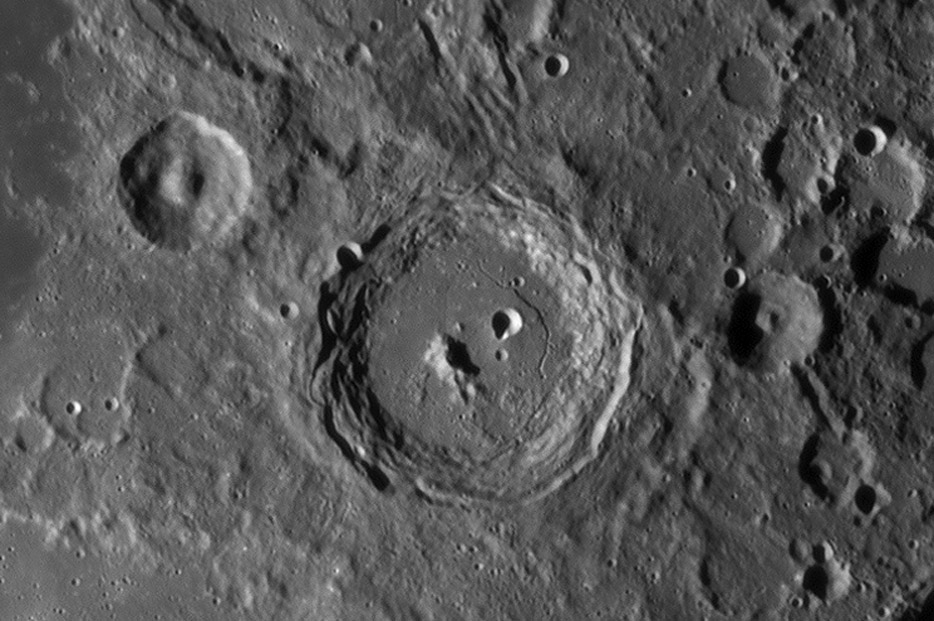March 11, 2010
Peaks & Walls

image by Stefan Lammel
There are three central peaks in this snippet from a mosaic from Stefan. The peak in Arzachel, the big crater in the middle, is more or less what we think lunar central peaks should look like, except for being off-center. The peak is a massive mountain, with straight-line wall segments that reach from its summit to the crater floor. It looks sort of rugged, like a mountain should. Contrast that with the odd, rounded central peak filling the floor of Alpetragius to the west. And with the somewhat similar rounded peak in Parrot C to the east. Parrot C's peak is not as rounded as Alpet's - which Gerard Kuiper called an egg in a bird's nest - and doesn't fill the floor so completely. In fact, it is the walls of C and Alpet that look most alike. The erosional sequence of walls goes from a sharp rim crest scarp at Arzachel with somewhat rounded terraces, to Alpet where the scarp still exists but the inner wall has been completely erased/smoothed of any evidence to terraces. And C takes this one step further, with the smoothed walls extending al the way to the summit of the crater rim. Are these rounded peaks just the eroded version of a more typical mountainous peak? I don't think so. The Alpet peak is much wider in proportion to the crater floor than most peaks - Arzachel's peak could never be eroded enough to look like it. Perhaps the Alpet peak is the way most central peaks should look. A central peak forms by the rebound of ground zero. It always seemed strange that the rebound would be anything other than a broad upward swell - like the Alpet peak. Maybe we should be asking why most craters have small, non-rounded peaks?
Chuck Wood
Technical Details
Aug 12, 2009. 10in f4.8 Newtonian, Infinity 2-1M, 5x Powermate, green filter, 150/3000, Avistack, Registax, PSE5, Focus Magic
Related Links
Rükl plate 55
Yesterday's LPOD: Handheld Moon
Tomorrow's LPOD: Wiggly Lines
COMMENTS?
Register, Log in, and join in the comments.



